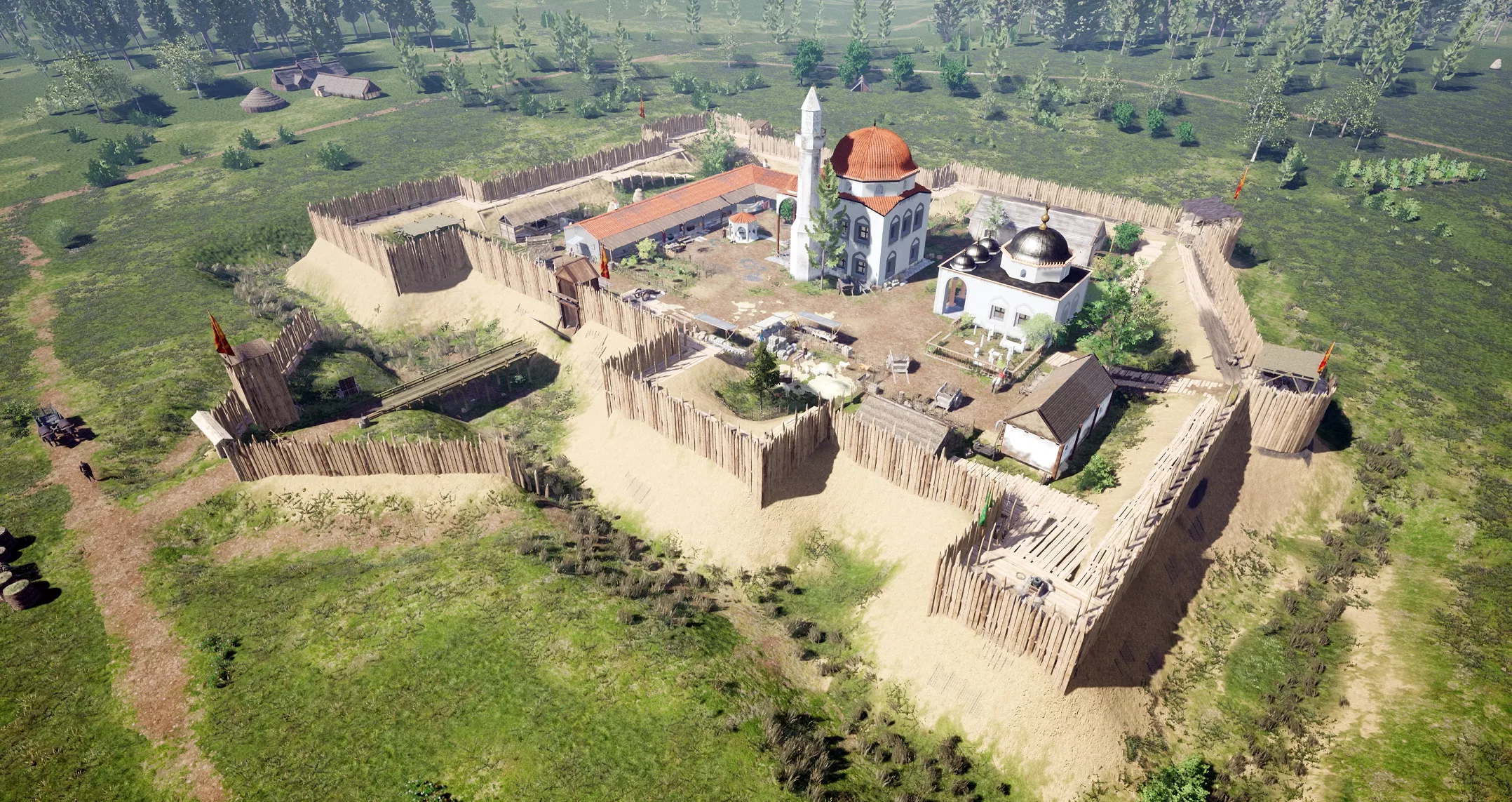A new volume has just been published by Pál Fodor – General Director of the Research Centre for the Humanities, research advisor of the Institute of History – entitled "Turbék. Szulejmán Szultán szigetvári Türbevárosa a 16–17. századi oszmán–török forrásokban" [Türbes. Sultan Suleiman's Türbe City in Szigetvár from 16th-17th century Ottoman-Turkish sources].
-

- Historical reconstruction of Sultan Suleiman's tomb chapel on the Turbék vineyard near Szigetvár. Edited by: Norbert Pap and Máté Kitanics
The Ottoman Sultan Suleiman embarked on his 13th military campaign on 29 April 1566, at the age of 72, with the aim of occupying as many of the three Hungarian “strongholds” – Szigetvár, Eger and Gyula – as possible that most threatened Ottoman-occupied lands and stabilize the Principality of Transylvania under his patronage once and for all.
The sultan arrived in Szigetvár with his army on August 9, setting up his ornate tent city on a vineyard east of the castle. However, he was unable to celebrate success on this occasion as he died on 7 September, a few hours before the Turkish army occupied the castle after the heroic deaths of Miklós Zrínyi, the castle captain of Szigetvár, and his remaining soldiers. A memorial türbe (tomb chapel) was built in the sultans honor in the mid-1570s on the site of Suleiman's tent city in Szigetvár, where the ruler's corpse lay in the ground for 42 days. Later, new buildings – mosques, dervish monasteries, barracks, protective planking – were built around it. The former campsite became a popular place of worship and pilgrimage in the Ottoman world.
After the Ottoman Turks were driven out, the shrine was destroyed, but the locals remembered it for many centuries. It was only in the 20th century that is location was finally forgotten. Pál Fodor's new volume provides an insight into how “Türbe City” was founded and operated.
A detailed description of the book is available here: https://cutt.ly/6uT2dpB